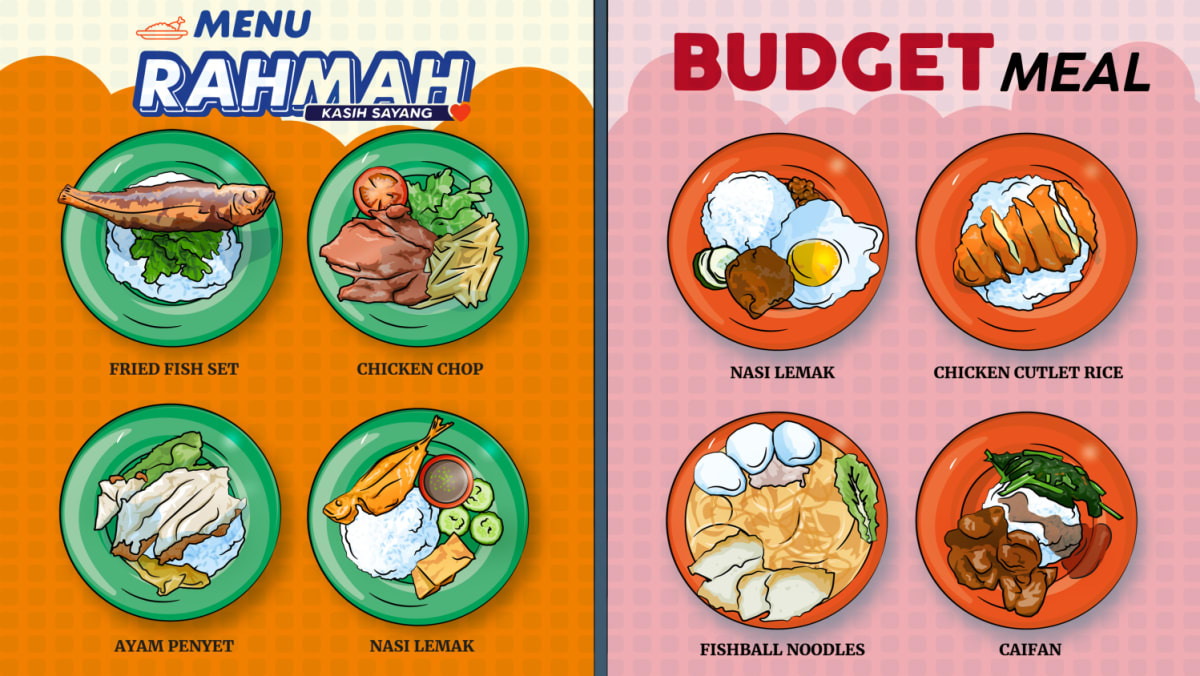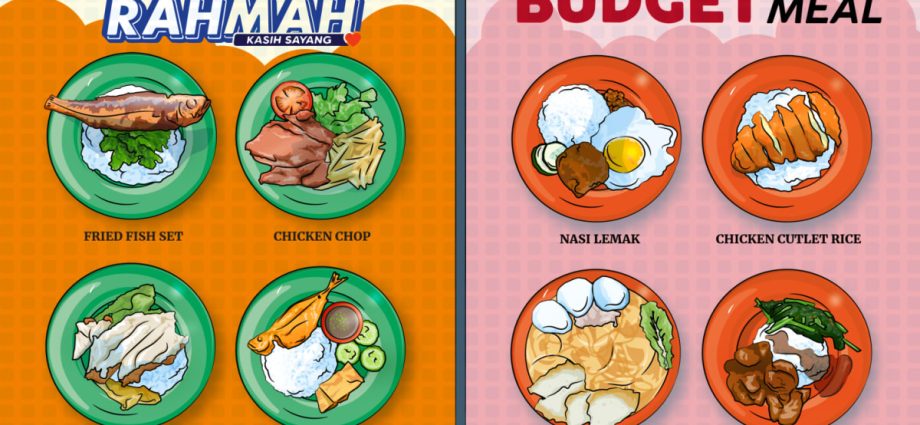
Mr Hussein Ibrahim, secretary of the Johor Indian Muslim Entrepreneurs Association (Perusim) told CNA that most of the association’s members have paused selling Menu Rahmah during Ramadan due to a lack of demand. Most Perusim members operate eateries in the southern state and offer Menu Rahmah in the form of nasi kandar or nasi lemak.
“We did launch it, but during this fasting month, we realised there was absolutely no reception so we have closed it temporarily. It could just be that people are fasting so they eat out less or because the menu is typically offered for lunch and many of the customers are only dining in the evenings,” said Mr Hussein.
“So if we continue selling now, we will be losing money,” he added.
At a press conference on Apr 18, Mr Anwar announced that businesses that participate in the Menu Rahmah initiative will be able to purchase raw items at special discounted rates.
He said that the Malaysian government is collaborating with selected supermarkets to offer these operators special prices for items such as chicken, onions and other basic ingredients.
“We are aware of the cost that has to be borne by the (Menu Rahmah) operators for raw materials and food items.
“We hope this initiative will bring relief to operators and ensure the continuity and sustainability of the Menu Rahmah programme,” said the prime minister.
In response to queries from CNA, Mr Salahuddin, the minister, said Menu Rahmah has been “widely accepted” by both consumers and businesses across the country over the past few months.
“Moderating inflation is among the quick wins we have achieved from the Menu Rahmah initiative. Based on our feedback sessions with residents, it’s very clear that the B40 (Bottom 40 per cent income group) and the M40 (middle 40 per cent income group) are very thankful,” said Mr Salahuddin.
“But we have to remember that KPDN has never categorised Menu Rahmah as food options only for the poor, it is for everyone. So for those who are in need, they are welcome to pick Menu Rahmah as their choice for dining,” he added.
ARE SUCH BUDGET MEALS HEALTHY?
There is also the question of nutritional value.
CNA sent nutritionist Siti Saifa 10 photos of the budget meals offered at various coffee shops in Singapore.
Ms Siti said that a healthy budget meal should incorporate a variety of food such as whole grains, vegetables and enough lean protein – so most budget meals cannot be considered a complete and healthy meal.
Several dishes lacked sufficient protein content, and some had processed food like fishcake or fishballs.
“This may mislead the public to think that these food items were part of the protein sources. However, these food items are a poor source of protein and are high in sodium,” said the lecturer from Temasek Polytechnic’s School of Applied Sciences.
Other criticisms were that some meals included fried items, several meals had a very small portion of vegetables, and none included whole grains. For example, an aglio olio pasta from one Western food stall did not have any protein and vegetables.
“The economical rice that was served with chicken and two types of vegetables, was the only meal that almost met the recommended portions of vegetables and protein. This dish can be further improved by replacing the rice with brown rice and cooking the eggplant with less oil and sauce,” she said.
In Malaysia, Menu Rahmah has drawn flak from some quarters for offering food of poor nutritional value.
In February, opposition lawmaker Halimah Ali sparked controversy when she appeared to suggest that Menu Rahmah options are of low quality and could expose consumers to cancer, autoimmune diseases as well as autism.
According to Hansard, the Parti Islam Se-Malaysia (PAS) lawmaker said in her parliamentary speech: “I have no issues with the phrase ‘rahmah’, but don’t give the B40 low-quality food supplies that may cause them to be exposed to cancer, autoimmune disease, autism, among others.”
Her remarks sparked criticism by the ruling coalition lawmakers. Dr Halimah later apologised for her remarks.
However, there is a common theme among many of the Menu Rahmah options. Many of the protein sources in the meals – chicken or fish – are deep-fried.
Mr Rosli of the Bumiputera Petty Traders Association acknowledged that some of the association members have no choice but to offer fried fish or fried chicken over steamed or grilled options as these food items tend to last longer without going bad. Most members of the association are food retailers in the Klang Valley.
“The reality is that sometimes at the end of the day, not everything is sold. Frying fish and chicken gives these retailers an option to repurpose the menu, perhaps frying the meat again with soya sauce so that it remains fresh (for consumption) the next day,” said Mr Rosli.
Medical expert Dr Zainul Ariffin Omar, who is an adviser to the Malaysian Public Health Organization, told CNA that most options offered by Menu Rahmah he encountered were sufficiently nutritious.
“For instance, I sampled the options at the Mydin food courts, they were decent. The nasi kandar had rice, vegetables and fish, with curry. The quality is good, and has a good balance of carbohydrates, protein and fibre,” he said.
“But for some others, like fast food chains, they offer less healthy food and they may be leveraging Menu Rahmah to promote some of their food,” said Dr Zainul Arrifin.
He added that whether Menu Rahmah options are nutritious is dependent on the consumer. He urged consumers to be discerning of what they are purchasing.
“Customers must be aware that paying low prices doesn’t mean they should accept low quality,” he said.

